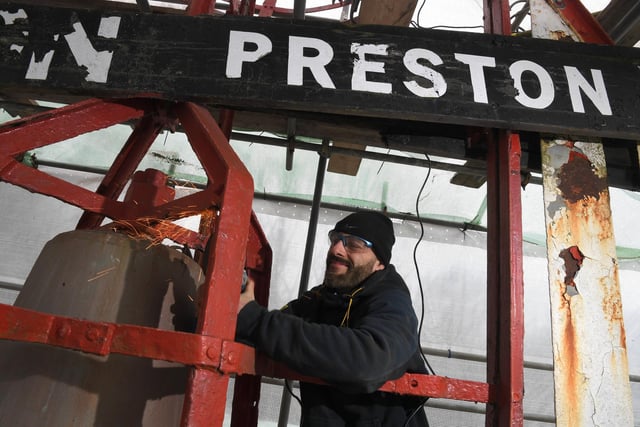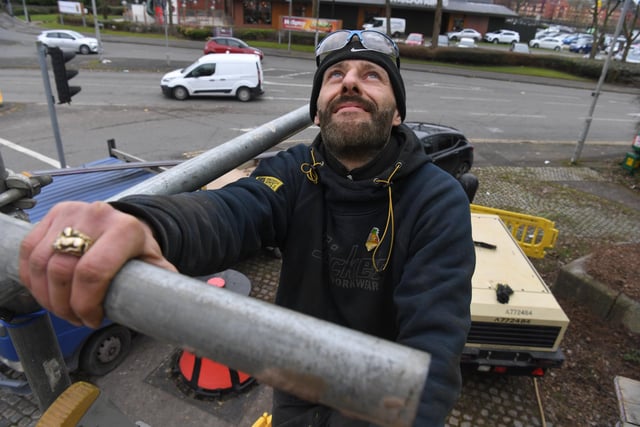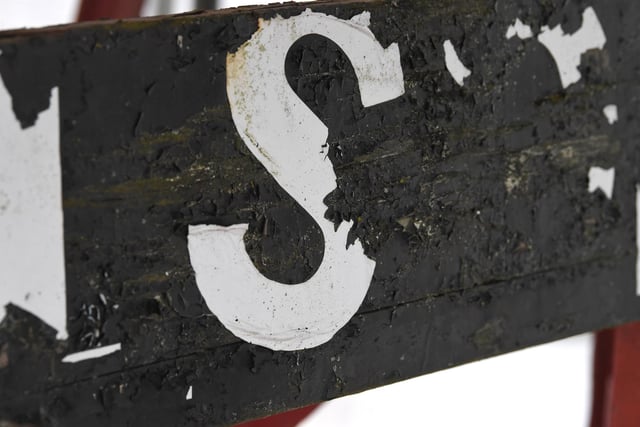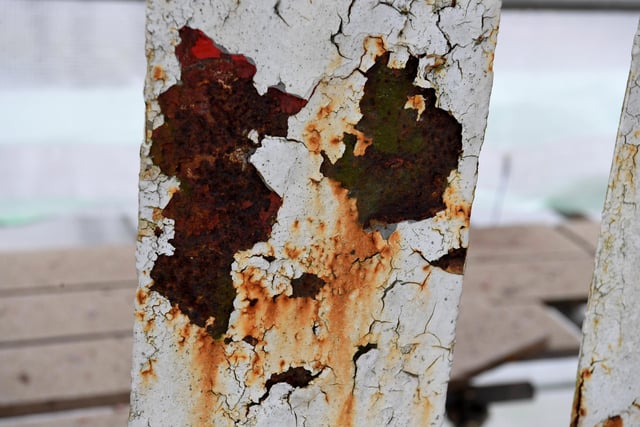In December, the Post revealed how locals felt ashamed of the “disgusting” state of two red boat buoys marking the original course of the River Ribble, which was diverted in the 19th Century to enable the construction of Preston docks.
Preston City Council own the bell buoys and in December vowed to re-paint them “in the near future”.
The last time this was done was in 2010.
So, what’s happening?
Now Preston Council have appointed workmen and a schedule has been drawn up.Councillor Freddie Bailey said: “The works to the Nelson Buoy on Pedders Lane are being undertaken by a local firm, Sandblasting Lancashire, who are undertaking all of the refurbishment work.
“Once the remedial works are complete, the buoy will then be painted in its original colours. The Nelson Buoy name signs will also be replaced.
“Following the completion of the Pedders Way bouy, the scaffold will be dropped and moved over to the Nelson Buoy at the junction of Port Way with Watery Lane, where the same process will be begin. Work on refurbishing each buoy will take around 10 to 15 days once the scaffolding has been erected.
“It’s fantastic to see these historical Preston landmarks being restored by a local company to their former glory and they should remain in good condition for many years to come.”
History
The two Nelson buoys at the entrances to the Riversway estate were purchased in 1890 from the Belfast Harbour Authority.
One buoy was placed on station approximately 17 miles out in the Ribble estuary whilst the second was in storage at the Docks. Their job was to mark a safe anchorage for ships wishing to enter the estuary and the port of Preston, using a paraffin light and a bell which rang every 30 seconds.
Weighing around 40 tons they were held in position by a five tonne sinker and 310 ft of 1 5/8ths chain.
The Buoys were removed with the closure of the port, but were brought back to Preston and lifted out under the 100 tonne crane for a major overhaul prior to being put in their present positions.

1. Preston Docks
Ian Blakely of Sandblasting Lancashire, begins the refurbishment of the iconic buoy on Preston Docks Photo: Neil Cross

2. Preston Docks
Ian Blakely of Sandblasting Lancashire, says the Nelson Buoys desperately needed the refurb work Photo: Neil Cross

3. Preston Docks
The refurbishment of the iconic buoy on Preston Docks begins Photo: Neil Cross

4. Preston Docks
Preston City Council had received complaints about the state of the Nelson Buoy Photo: Neil Cross